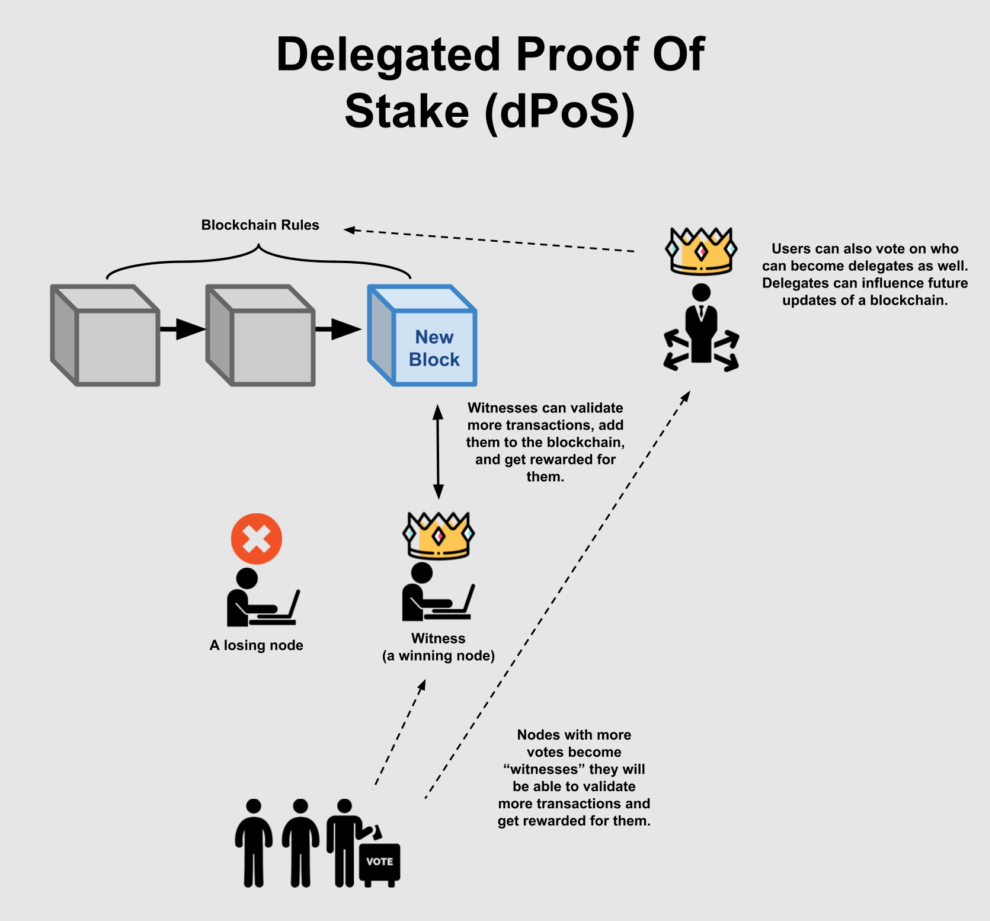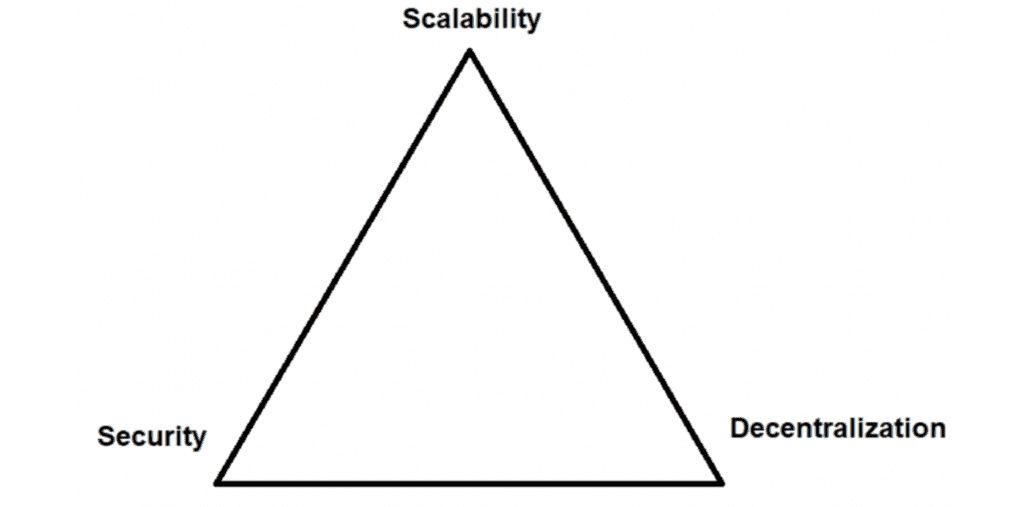Speaking of Blockchain, we will talk about the most prominent Proof of Work (PoW) consensus algorithms in Bitcoin and Proof of Stake (PoS) in Ethereum. But currently, DPoS is considered one of the most effective consensus systems today. Along with using less power than a PoW system, DPoS also takes less time than a PoS system. In this article, we will learn what is Delegated Proof of Stake.
What is Delegated Proof of Stake (DPoS)?
Delegated Proof of Stake (DPoS) is a consensus algorithm in many blockchains today. In which the token holders choose several professional nodes to represent them to operate the network; in return, the token holders will share a reward for maintaining the network’s security.
EOS co-founder Daniel Larimer proposed the DPoS Consensus. DPoS is a combination of PoS, PoA, and a voting system based on the number of tokens held (equity); it values the identity and receipts of the participants.
How does Delegated Proof of Stake (DPoS) work?

Similar to Proof of Authority (PoA), Delegated Proof of Stake has a limited number of validators, usually ranging from 10 to 100, which makes blockchains using DPoS consensus easy scalability.
Besides, compared to Proof of Work (PoW) – another algorithm commonly used in Bitcoin and Ethereum, DPoS has a different operating mechanism. Instead of requiring users to solve complex computational problems to generate new blocks, it is based on delegating users to select a certain number of “delegates” to do the work, verify transactions, and generate new blocks.
The operation process of DPoS can be summarized into the following steps:
- Step 1: Users elect delegates – In a DPoS system, users can elect a certain number of delegates to represent them in transaction verification and new block generation.
- Step 2: Delegates verify transactions – The elected delegates will perform transaction verification on the blockchain. They check the validity of transactions and form new blocks.
- Step 3: Consensus – When a new block is created, the delegates must agree on the block. This process helps to ensure the integrity of the blockchain and prevent attacks using the decentralization of power.
- Step 4: Reward – Delegates are rewarded with some kind of token provided by the blockchain system. Usually, the reward will be proportional to the number of tokens that have been staked by the user.
What problem does Delegated Proof of Stake (DPoS) solve?

The main problem that Delegated Proof of Stake aims to solve is to increase the performance and expand the processing capacity of the blockchain network. In PoW systems like Bitcoin, verifying transactions and adding new blockchains require computers in the network to complete complex computational problems. This requires a lot of energy and time, causing latency and limiting the network’s processing capacity.
With PoS, randomly selecting users to participate in transaction verification and block generation is a way to solve the problem. However, PoS can suffer from a “51% attack” problem, where users with large amounts of tokens can take control and cheat in the network.
DPoS combines the advantages of PoW and PoS to solve these problems. Instead of allowing all users to participate in transaction verification and block generation, DPoS selects only a limited number of users who have been voted (delegates) to do this. These delegates represent a part of the network and have the right to participate in the decision-making process.
DPoS uses a voting system to elect delegates. Users in the network can vote for delegates they trust and want to participate in the consensus process. Delegates with the highest number of votes will be selected to verify the transaction and create the block. Limiting the number of delegates helps to increase processing speed and reduce latency in the network.
The DPoS model also reduces the risk of attack by 51% compared to PoS. With DPoS, controlling the network requires too many delegates, not just a single person, for the majority of votes. This makes it more difficult to attack the network and increases the security of the system.
In short, DPoS is a consensus mechanism in the blockchain, which increases performance, expands processing capacity, and increases security compared to PoW and PoS. It solves network latency and scalability, and reduces attack risk by 51%.
Advantage
Transaction validation requires a significantly less number of nodes thanks to the DPoS consensus process. This allows the network to establish agreement in a matter of seconds, greatly enhancing the system’s processing effectiveness, resolving the issue of blockchain scalability, and making it appropriate for use in the real world.
When voting privileges are restricted to validator nodes, the Delegated Proof of Stake (DPoS) consensus model provides a clear governance structure. Compared to blockchains using PoW and POS consensus, the paradigm enables the network to make choices more quickly.
Additionally, blockchains using Delegated Proof of Stake (DPoS) consensus typically have a small number of validator nodes and do not need overly powerful computer configurations. Furthermore, Delegators do not need to run their computers at full power; only validators do, which significantly reduces the network’s overall power consumption. The running expenses of DPoS blockchains are the lowest when compared to PoW and PoS networks.
Limit
Similar to a company’s board system, Delegated Proof of Stake (DPoS) enables holders of the majority of power to give competent “experts” more power the responsibility of verifying transactions while also allowing them to split the reward for taking part in the creation of new blocks of transactions.
The drawback of this approach is that it overly concentrates power on a limited number of validator nodes. These nodes have the power to control the whole network if they band together. Additionally, DPoS lessens nodes’ desire to take part in network governance choices.
Conclusion
DPoS is very different from PoW and even PoS. In this system, voting by stockholders is a way to find and promote honest and effective representatives (or witnesses). However, new block generation is really different from PoS systems, and in most cases, it offers higher performance in terms of the number of transactions executed per second.
DISCLAIMER: The Information on this website is provided as general market commentary and does not constitute investment advice. We encourage you to do your own research before investing.






















